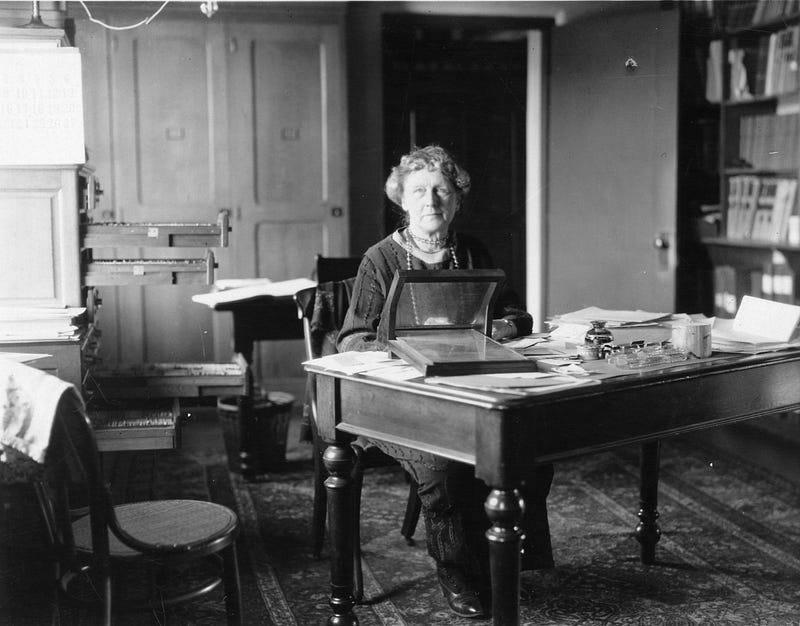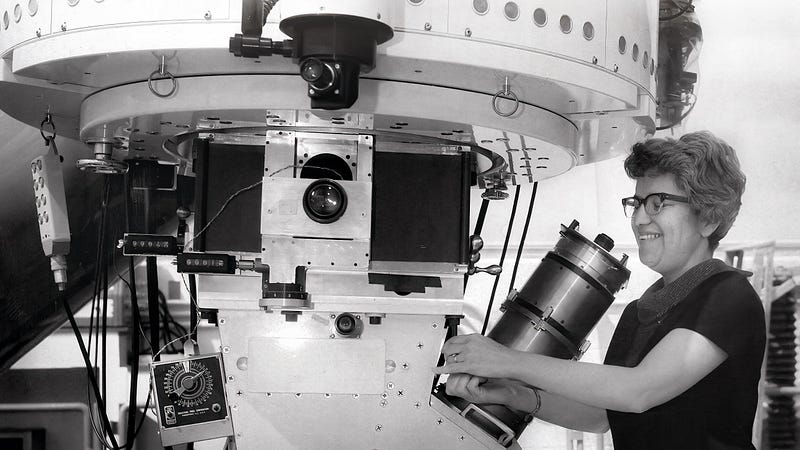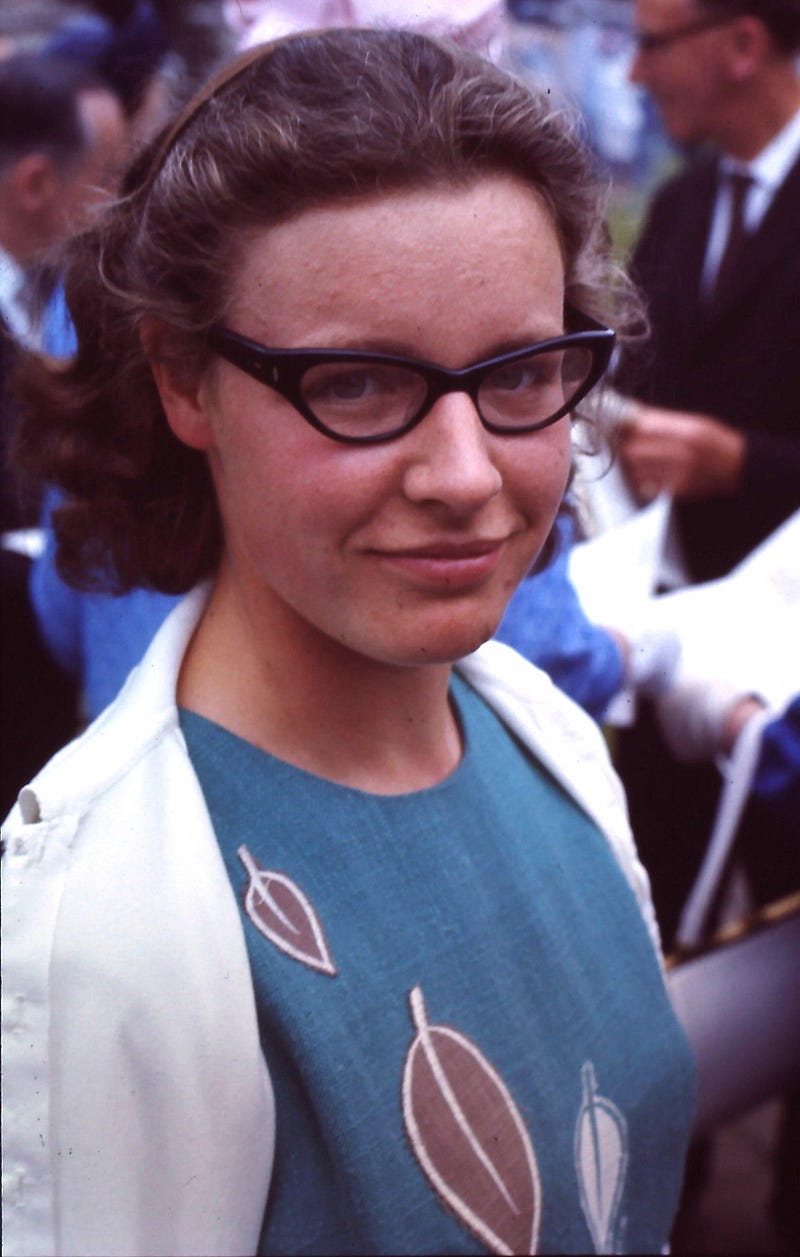Celebrating Women in Science During Women’s History Month
Written on
Chapter 1: Introduction to Women in Science
Welcome to a new episode of The Cosmic Companion, marking our first broadcast from a fresh studio setting. We're excited to kick off Women’s History Month by honoring remarkable women in science. This week, we have three extraordinary guests: Clare Fiesler and Gabby Salazar, science journalists from National Geographic, and Kim Macharia, chair of Space Prize. Together, we will explore the contributions of three exceptional women who have dramatically influenced the field of astronomy. Let’s embark on this journey!
Chapter 2: Pioneering Women in Astronomy
Section 2.1: Annie Jump Cannon

Annie Jump Cannon, born in Delaware during the Civil War, made significant advancements in the classification of stars, some of which remain relevant today. Encouraged by her mother, she developed an early interest in astronomy, leading them to construct a small observatory at home. Despite facing hearing loss during her childhood, Cannon's passion for astronomy and physics thrived. She also had a talent for photography.
Cannon was involved in the first X-ray experiments in the U.S. and dedicated herself to cataloging and classifying stars. During her tenure, she worked as part of a team of women who were often compensated modestly, earning about 50 cents per hour (equivalent to around $15 today). Between 1911 and 1915, she cataloged approximately 5,000 stars monthly, amassing records on over 350,000 stars throughout her lifetime. A member of the National Women’s Party, she was a staunch advocate for women's voting rights. Cannon continued her work at Harvard College Observatory until her death in 1941 at the age of 71.
Section 2.2: Vera Rubin

Vera Rubin made groundbreaking discoveries about dark matter, finding it hidden within galaxies. In 1938, as tensions rose globally, ten-year-old Vera Cooper was captivated by the night sky from her home in Washington D.C., thanks to her father who helped her build her first telescope. A decade later, she became the first woman to graduate from Vassar College with a degree in astronomy and later obtained her master's at Cornell University, studying under renowned physicists.
In the early 1950s, Vera completed her doctorate at Georgetown, where she met her future husband. Initially, her master's thesis faced skepticism from the astronomical community, leading her to investigate galaxy rotation rates, which unexpectedly turned out to be controversial. Together with Kent Ford, she discovered that stars in the outer regions of galaxies rotated at similar speeds to those near the center, challenging Newtonian principles and revealing the presence of dark matter within galaxies, revolutionizing our understanding of the universe.
Section 2.3: Jocelyn Bell Burnell

In 1967, during a transformative year marked by cultural shifts, Jocelyn Bell Burnell, who was born in 1943, discovered pulsars—regularly flashing lights from deep space. Raised in a family that valued science, she was inspired by her father, an architect involved in designing the Armagh Planetarium in Northern Ireland. After excelling in physics at the University of Glasgow, she earned her PhD at the University of Cambridge, focusing on quasars.
While examining data in November 1967, Bell identified an unusual signal pulsing every 1.3 seconds, which she initially dubbed LGM-1 for “Little Green Men.” During press events, she often faced questions about her personal life rather than her groundbreaking work. Although the discovery of pulsars earned a Nobel Prize in Physics in 1974, she was notably excluded from the award. Nevertheless, she continued to make significant contributions to science, including managing the James Clerk Maxwell Telescope in Hawaii. In 2018, she received a $3 million prize for her pulsar discovery, which she generously donated to support women and minorities in physics.
Chapter 3: Supporting Future Generations
No Boundaries, a recent publication from National Geographic, highlights the impactful work of 25 female scientists globally. Co-authored by Clare Fiesler and Gabby Salazar, the book aims to inspire young women and people of color to pursue careers in science. Kim Macharia from Space Prize discusses their initiatives designed to empower young female scientists by offering funding and opportunities.
Thank you for joining us on this episode of The Cosmic Companion. We appreciate your continued support. Next week, we will feature NASA legend Poppy Northcutt, the first female engineer at NASA, who played a crucial role in the success of Apollo 8 and the safe return of Apollo 13. We’ll discuss her contributions to these missions and the upcoming Artemis missions, which aim to return humans to the Moon after 50 years. Don’t miss it!
For more episodes, visit TheCosmicCompanion.net or find us on social media. Subscribe, follow, and spread the word about our show—your support makes it all possible!
Clear skies!
James Maynard, a founder and publisher of The Cosmic Companion, has a background in physics, chemistry, and history. A New England native, he now resides in Tucson with his wife, Nicole, and their cat, Max.
Did you enjoy this content? Subscribe to The Cosmic Companion on Medium for all our articles! Join us on The Cosmic Companion Network for our podcast, weekly videos, informative newsletters, and more!